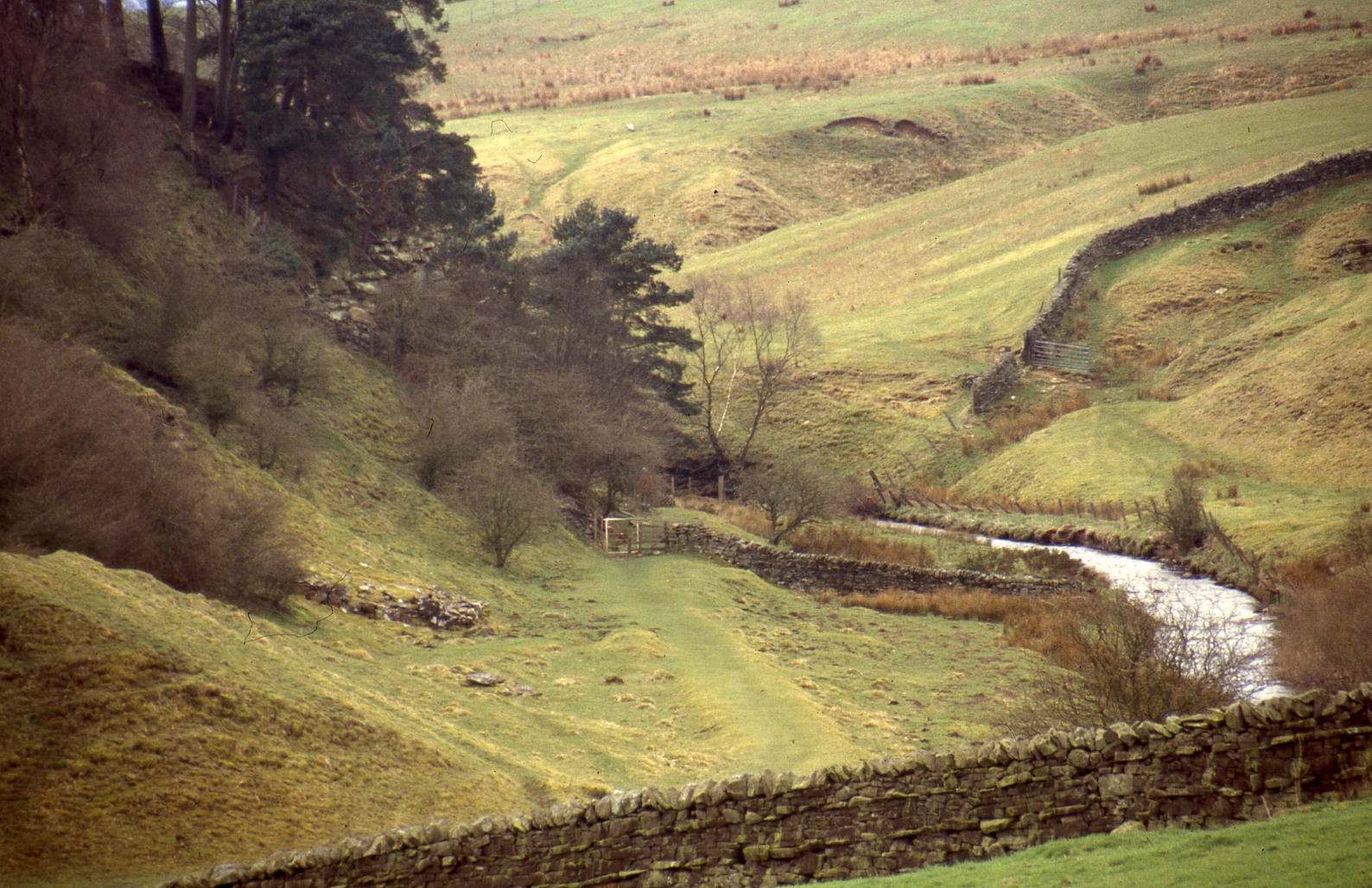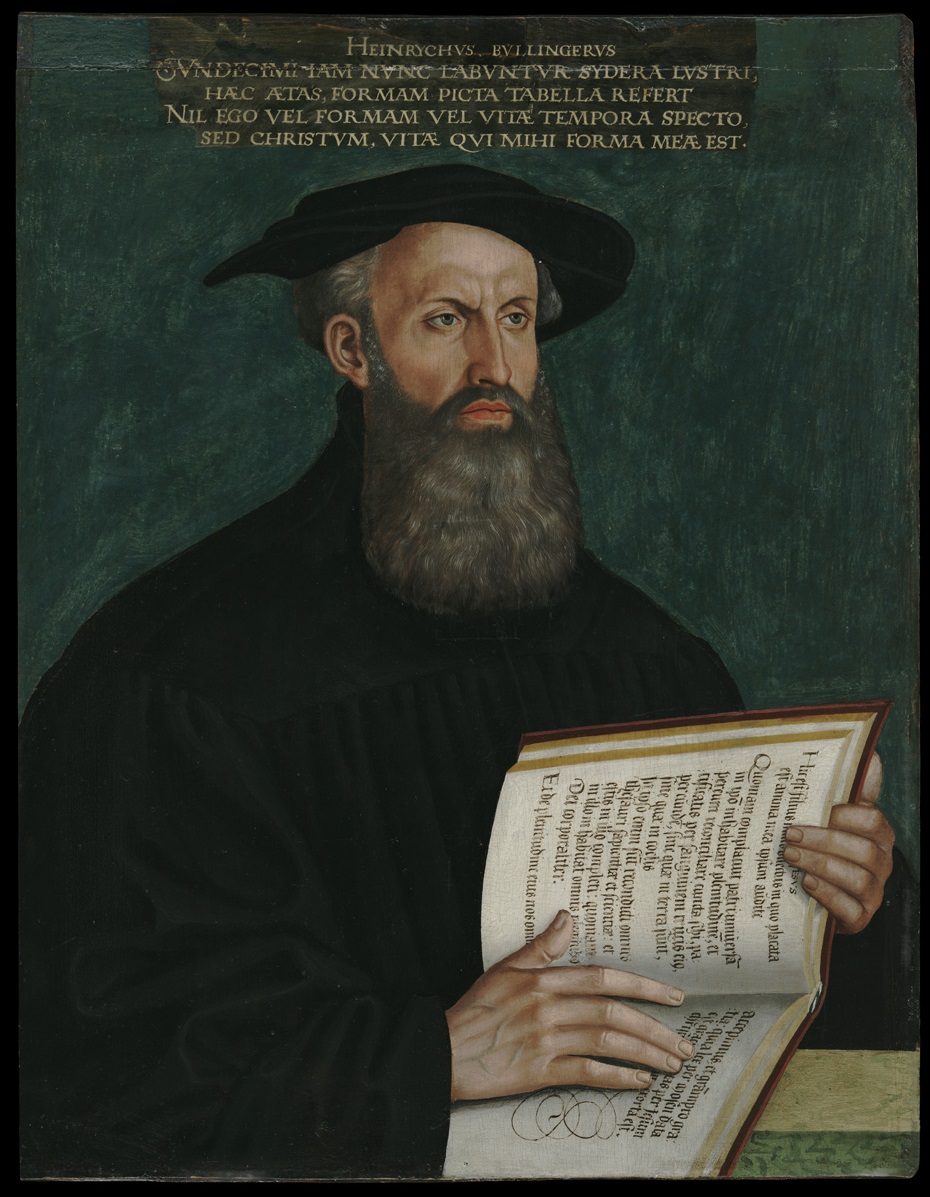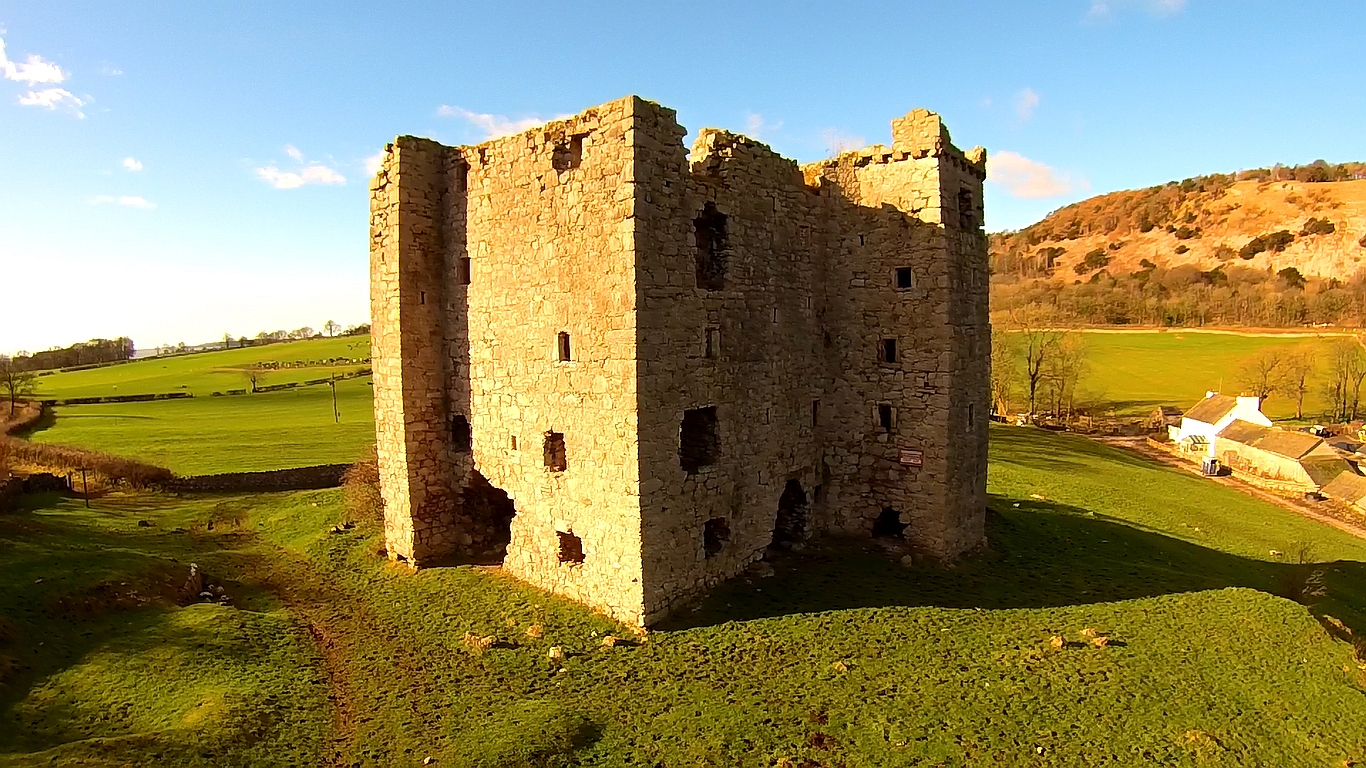|
Unthank Hall
Unthank Hall is a Grade II listed property now serving as commercial offices, situated on the southern bank of the River South Tyne east of Plenmeller, near Haltwhistle, Northumberland. In the 16th century the manor was owned by the Ridley family and it is possible that the bishop and martyr Nicholas Ridley was born there. The house, which was built in the 16th century, incorporating an ancient pele tower, was substantially remodelled and extended in 1815. The Hall came into the ownership of the Dixon family and then by marriage to the Browns. Dixon Brown (1776–1852) changed his name in 1825 to Dixon Dixon, and his nephew Rev Dixon Dixon Brown rebuilt the Hall between 1862 and 1865. The house was substantially remodelled in 1815 and again in 1865 in a neo-Tudor style, both times by Newcastle architect John Dobson. Much of the 1865 house has since between demolished by further alterations in 1900 and a significant reduction in size in 1965. See also *Hadrian's Wall Had ... [...More Info...] [...Related Items...] OR: [Wikipedia] [Google] [Baidu] |
Unthank Hall - Geograph
Unthank may refer to: Places England *Unthank, Dalston, Cumbria *Unthank, Glassonby, Cumbria * Unthank, Skelton, Cumbria *Unthank, Derbyshire *Unthank, Stanhope, County Durham * Newtown Unthank, Leicestershire * Unthank, Alnham, Northumberland * Unthank, Haltwhistle, Northumberland **location of Unthank Hall *Unthank, North Yorkshire, Yorkshire Scotland *Unthank, Angus * Unthank, Dumfries and Galloway * Unthank, South Lanarkshire *Unthank, Moray In fiction *a city in Alasdair Gray's book '' Lanark'' People with the surname * DeNorval Unthank (1899–1977), Oregon's 2nd African American doctor and civil rights pioneer * DeNorval Unthank Jr. (1929–2000), son of DeNorval Unthank and architect * Nellie Unthank (1846–1915), Mormon pioneer * Valda Unthank (1909–1987), Australian cyclist * Rachel and Becky Unthank, singers in the group The Unthanks (see below) See also *Unthank End *The Unthanks, an English folk group from Northumberland *Intake (land) An intake (also spelt in ... [...More Info...] [...Related Items...] OR: [Wikipedia] [Google] [Baidu] |
Grade II Listed Building
In the United Kingdom, a listed building or listed structure is one that has been placed on one of the four statutory lists maintained by Historic England in England, Historic Environment Scotland in Scotland, in Wales, and the Northern Ireland Environment Agency in Northern Ireland. The term has also been used in the Republic of Ireland, where buildings are protected under the Planning and Development Act 2000. The statutory term in Ireland is " protected structure". A listed building may not be demolished, extended, or altered without special permission from the local planning authority, which typically consults the relevant central government agency, particularly for significant alterations to the more notable listed buildings. In England and Wales, a national amenity society must be notified of any work to a listed building which involves any element of demolition. Exemption from secular listed building control is provided for some buildings in current use for worship, ... [...More Info...] [...Related Items...] OR: [Wikipedia] [Google] [Baidu] |
River Tyne
The River Tyne is a river in North East England. Its length (excluding tributaries) is . It is formed by the North Tyne and the South Tyne, which converge at Warden Rock near Hexham in Northumberland at a place dubbed 'The Meeting of the Waters'. The Tyne Rivers Trust measure the whole Tyne catchment as , containing of waterways. Course North Tyne The North Tyne rises on the Scottish border, north of Kielder Water. It flows through Kielder Forest, and in and out of the border. It then passes through the village of Bellingham before reaching Hexham. South Tyne The South Tyne rises on Alston Moor, Cumbria and flows through the towns of Haltwhistle and Haydon Bridge, in a valley often called the Tyne Gap. Hadrian's Wall lies to the north of the Tyne Gap. Coincidentally, the source of the South Tyne is very close to those of the Tees and the Wear. The South Tyne Valley falls within the North Pennines Area of Outstanding Natural Beauty (AONB) – the second largest of the ... [...More Info...] [...Related Items...] OR: [Wikipedia] [Google] [Baidu] |
Plenmeller
Plenmeller is a village and former civil parish, now in the parish of Plenmeller with Whitfield, in Northumberland, England about a mile (1½ km) southeast of Haltwhistle. In 1951 the parish had a population of 107. Governance Plenmeller is in the parliamentary constituency of Hexham. The parish council is Plenmeller with Whitfield. Historically, Plenmeller was a township, also incorporating Unthank, within the ancient parish of Haltwhistle. On 1 April 1955 the parish was abolished to form Plenmeller with Whitfield. Economy Coal mining dominated the history of the area in recent times. Employment at Plenmeller colliery reached its peak in the early 1920s. When the colliery closed in 1932 it caused widespread hardship in the area. More recently coal has been extracted by open cast methods on Plenmeller Common and land then returned to a more natural landscape. The open cast mine was opened by John Northand CBE, Deputy Chairman of the British Coal Corporation, on 1 ... [...More Info...] [...Related Items...] OR: [Wikipedia] [Google] [Baidu] |
Haltwhistle
Haltwhistle is a market town and civil parish in Northumberland, England, east of Brampton. It had a population of 3,811 at the 2011 Census. Stone-built houses are a feature of Haltwhistle. It is one of two settlements in Great Britain which claim to be the exact geographic centre of the island, along with Dunsop Bridge in Lancashire, to the south. This is the closest community to Hadrian's Wall and to Northumberland National Park, both approximately two miles distant. The name The name Haltwhistle has nothing to do with a railway stop. Early forms of the name are Hautwesel (1240), Hautwysel (1254), Hawtewysill (1279), Hautwysell (1381), Haltwesell (Speede 1610). The second part -twistle relates to two streams or rivers. It derives from two Old English words ''twicce'' or ''twise'', 'twice', 'division into two' and ''wella'', 'stream, brook'. The second word is reduced in the compound word to ''ull'', making ''twicculla'', ''twisella''. All but one of the examples in place na ... [...More Info...] [...Related Items...] OR: [Wikipedia] [Google] [Baidu] |
Northumberland
Northumberland () is a county in Northern England, one of two counties in England which border with Scotland. Notable landmarks in the county include Alnwick Castle, Bamburgh Castle, Hadrian's Wall and Hexham Abbey. It is bordered by land on three sides; by the Scottish Borders region to the north, County Durham and Tyne and Wear to the south, and Cumbria to the west. The fourth side is the North Sea, with a stretch of coastline to the east. A predominantly rural county with a landscape of moorland and farmland, a large area is part of Northumberland National Park. The area has been the site of a number of historic battles with Scotland. Name The name of Northumberland is recorded as ''norð hẏmbra land'' in the Anglo-Saxon Chronicle, meaning "the land north of the Humber". The name of the kingdom of ''Northumbria'' derives from the Old English meaning "the people or province north of the Humber", as opposed to the people south of the Humber Estuary. History ... [...More Info...] [...Related Items...] OR: [Wikipedia] [Google] [Baidu] |
Nicholas Ridley (martyr)
Nicholas Ridley ( – 16 October 1555) was an English Bishop of London (the only bishop called "Bishop of London and Westminster"). Ridley was one of the Oxford Martyrs burned at the stake during the Marian Persecutions, for his teachings and his support of Lady Jane Grey. He is remembered with a commemoration in the calendar of saints (with Hugh Latimer) in some parts of the Anglican Communion (Church of England) on 16 October. Early years and advancement (c.1500–50) Ridley came from a prominent family in Tynedale, Northumberland. He was the second son of Christopher Ridley, first cousin to Lancelot Ridley and grew up in Unthank Hall from the old House of Unthank located on the site of an ancient watch tower or pele tower. As a boy, Ridley was educated at the Royal Grammar School, Newcastle, and Pembroke College, Cambridge, where he proceeded to Master of Arts in 1525. Soon afterward he was ordained as a priest and went to the Sorbonne, in Paris, for further education. After ... [...More Info...] [...Related Items...] OR: [Wikipedia] [Google] [Baidu] |
Pele Tower
Peel towers (also spelt pele) are small fortified keeps or tower houses, built along the English and Scottish borders in the Scottish Marches and North of England, mainly between the mid-14th century and about 1600. They were free-standing with defence being a prime consideration of their design with "confirmation of status and prestige" also playing a role. They also functioned as watch towers where signal fires could be lit by the garrison to warn of approaching danger. The FISH Vocabulary ''Monument Types Thesaurus'' lists "pele" alongside "bastle", "fortified manor house" and "tower house" under the broader term "fortified house". Pevsner defines a peel as simply a stone tower. Outside of this, "peel" or "pele" can also be used in related contexts, for example a "pele" or "barmkin" (in Ireland a bawn) was an enclosure where livestock were herded in times of danger. The rustling of livestock was an inevitable part of Border raids, and often their main purpose. In this ... [...More Info...] [...Related Items...] OR: [Wikipedia] [Google] [Baidu] |
John Dobson (architect)
John Dobson (1787 – 8 January 1865) was a 19th-century English architect in the neoclassical tradition. He became the most noted architect in the North of England. Churches and houses by him dot the North East – Nunnykirk Hall, Meldon Park, Mitford Hall, Lilburn Tower, St John the Baptist Church in Otterburn, Northumberland, and Beaufront Castle among them. During his career he designed more than 50 churches and 100 private houses. He is best known for designing Newcastle railway station and for his work with Richard Grainger developing the centre of Newcastle in a neoclassical style. Early history Dobson was born on 9 December 1787 in High Chirton, North Shields, in The Pineapple Inn (an earlier building on the same site). He was the son of an affluent market gardener, John Dobson, and his wife Margaret, and young Dobson was educated in Newcastle. As a young child he had an exceptional gift for drawing. Aged 11, he executed designs for a local damask weaver. At the ... [...More Info...] [...Related Items...] OR: [Wikipedia] [Google] [Baidu] |
Hadrian's Wall
Hadrian's Wall ( la, Vallum Aelium), also known as the Roman Wall, Picts' Wall, or ''Vallum Hadriani'' in Latin, is a former defensive fortification of the Roman province of Britannia, begun in AD 122 in the reign of the Emperor Hadrian. Running from Wallsend on the River Tyne in the east to Bowness-on-Solway in the west of what is now northern England, it was a stone wall with large ditches in front of it and behind it that crossed the whole width of the island. Soldiers were garrisoned along the line of the wall in large forts, smaller milecastles and intervening turrets. In addition to the wall's defensive military role, its gates may have been customs posts. A significant portion of the wall still stands and can be followed on foot along the adjoining Hadrian's Wall Path. The largest Roman archaeological feature in Britain, it runs a total of in northern England. Regarded as a British cultural icon, Hadrian's Wall is one of Britain's major ancient tourist attract ... [...More Info...] [...Related Items...] OR: [Wikipedia] [Google] [Baidu] |
Grade II Listed Buildings In Northumberland
Grade most commonly refers to: * Grade (education), a measurement of a student's performance * Grade, the number of the year a student has reached in a given educational stage * Grade (slope), the steepness of a slope Grade or grading may also refer to: Music * Grade (music), a formally assessed level of profiency in a musical instrument * Grade (band), punk rock band * Grades (producer), British electronic dance music producer and DJ Science and technology Biology and medicine * Grading (tumors), a measure of the aggressiveness of a tumor in medicine * The Grading of Recommendations Assessment, Development and Evaluation (GRADE) approach * Evolutionary grade, a paraphyletic group of organisms Geology * Graded bedding, a description of the variation in grain size through a bed in a sedimentary rock * Metamorphic grade, an indicatation of the degree of metamorphism of rocks * Ore grade, a measure that describes the concentration of a valuable natural material in the surroundin ... [...More Info...] [...Related Items...] OR: [Wikipedia] [Google] [Baidu] |
Country Houses In Northumberland
A country is a distinct part of the world, such as a state, nation, or other political entity. It may be a sovereign state or make up one part of a larger state. For example, the country of Japan is an independent, sovereign state, while the country of Wales is a component of a multi-part sovereign state, the United Kingdom. A country may be a historically sovereign area (such as Korea), a currently sovereign territory with a unified government (such as Senegal), or a non-sovereign geographic region associated with certain distinct political, ethnic, or cultural characteristics (such as the Basque Country). The definition and usage of the word "country" is flexible and has changed over time. ''The Economist'' wrote in 2010 that "any attempt to find a clear definition of a country soon runs into a thicket of exceptions and anomalies." Most sovereign states, but not all countries, are members of the United Nations. The largest country by area is Russia, while the smallest i ... [...More Info...] [...Related Items...] OR: [Wikipedia] [Google] [Baidu] |








